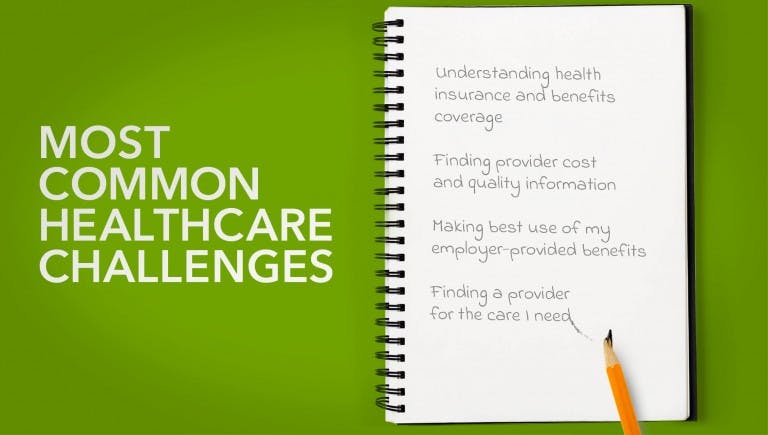New research shows that healthcare and health benefits complexity affects employees’ stress levels, productivity – even their physical and mental well-being. The survey also finds strong alignment among employers on a solution that enables a better employee experience.
HR teams and consultants work hard to design health benefits strategies that support and satisfy employees and their dependents. But how well do members understand your carefully crafted plans? From finding providers and understanding coverage limits to navigating point solutions and digital apps, do they sail through or struggle when accessing healthcare?
For answers and insights, in March and April Quantum Health surveyed 1,001 consumers who’d experienced healthcare in the past two years. These were adults 18 to 64 who receive benefits through an employer with 1,000 or more employees. To gain employers’ perspective, we also surveyed more than 250 benefits decision-makers at self-insured organizations with 1,000 or more employees.
Below are six research-based insights benefits pros might want to factor into their planning discussions.
The Confidence Gap
- 88% of employers believe employees are confident in understanding and using their health benefits, while barely half (52%) of employees feel confident.
In fact, only 45% of employees say they find it easy to use health benefits. Barely a third say it’s easy to navigate healthcare. This relative lack of confidence could play a role in low levels of preventive care, inappropriate ER visits, and other benefits performance measures.
The Complexity Challenge
- 79% of employees who recently used healthcare and benefits reported they had at least one challenge — and an average of three.
Importantly, the most common challenges (see the top four below) came early in healthcare journeys. That’s when making good decisions is key to putting benefits use and care on a clinically appropriate, cost-effective path.

The Employee Impact
- 57% of employees who had challenges say it caused them one or more health or care complications.
The most common complications cited were declines in mental well-being, physical well-being, and an inability to stay on a treatment plan. Employees with chronic conditions were even more likely to report having these complications.
The Productivity Hit
- 60% of employees have taken time out of their workday to deal with healthcare or benefits issues, averaging 27 minutes each time.
Sixty percent say they felt less productive and frustrated dealing with these issues while at work, while 59% say it made them feel stressed. It’s not a happy prospect for employers, either. For an organization with 5,000 employees, each dealing with three issues and taking 27 minutes per issue, the impact could amount to more than 4,000 employee hours spent dealing with healthcare and benefits challenges at work.
The Generational Divide
- Younger employees struggle most with healthcare and benefits.
Millennials and Generation Z, increasingly the core of the U.S. workforce, appear to struggle most with healthcare and health benefits. Compared with older colleagues, employees 18 to 29 are less confident, more likely to have challenges, take more time dealing with the issues at work, and even report greater negative health impacts from those challenges.
The Employer Consensus
- 97% of employers say offering professional healthcare navigation and care coordination is important to providing employees the best possible benefits.
Specifically, 85% or more of the decision-makers surveyed say professional navigation and care coordination would boost employees’ confidence in using health benefits, make their experience less stressful, improve their health outcomes, and even help them save on out-of-pocket costs.
